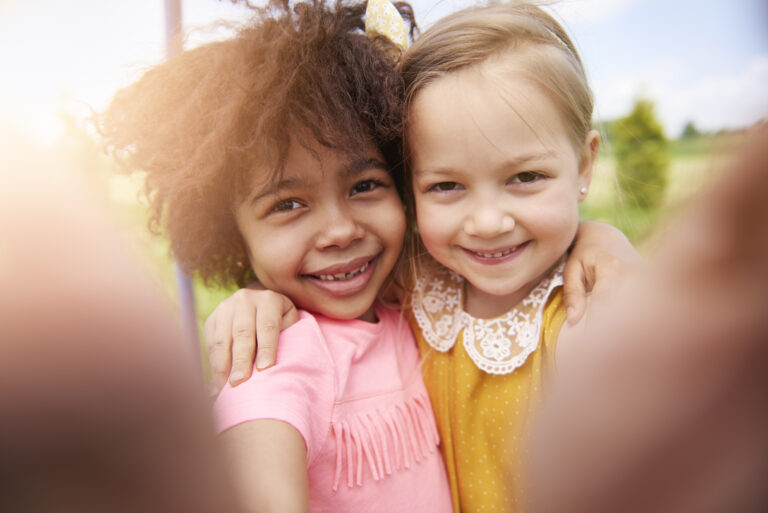Childhood is supposed to be a time of innocence, joy, and carefree laughter. Unfortunately, for too many children in the USA, it’s a time of fear, pain, and trauma. Child sex abuse and exploitation are harsh realities that plague our society even today. In this blog post, we’ll delve deep into the current statistics on childhood sex abuse and trauma within the USA as per official national reports from 2022-2023. We’ll explore the root causes behind this heinous crime against innocent children and discuss potential solutions to prevent it from happening in the future. Join us as we shed light on one of the most critical issues affecting our nation today.
– Current Statistics on Child Sex Abuse and Trauma within the USA
According to the official national reports from 2022-2023, child sex abuse and trauma are still prevalent issues in the USA. Shockingly, an estimated 1 in 4 girls and 1 in 6 boys will experience some form of sexual abuse before they reach adulthood.
Moreover, child exploitation has become even more rampant due to social media platforms that provide easy access for predators to target vulnerable children. In recent years, there has also been a significant increase in online grooming and sextortion cases reported.
The most common forms of child sex abuse include rape, incest, molestation, and trafficking. Unfortunately, many cases go unreported due to factors such as fear of retaliation or shame among victims.
It’s not just physical scars that childhood sex abuse causes; it can have long-term psychological effects on survivors too. This includes depression, anxiety disorders, and post-traumatic stress disorder (PTSD).
These statistics highlight the urgent need for society, as a whole, to act against this issue by educating ourselves about its prevalence and working towards creating safe spaces for children where they can feel protected from harm.
– The Problem of Childhood Sex Abuse and Trauma
Childhood sex abuse and trauma is a serious problem that affects millions of children worldwide. It is a form of exploitation, rape, incest, molestation, or trafficking that can have devastating effects on the victim’s physical and mental health.
The problem with childhood sex abuse and trauma is that it often goes unreported. Children may not even realize they are being abused or may be too scared to speak out about what has happened to them. Additionally, many perpetrators of these crimes go unpunished due to social stigma or lack of evidence.
Furthermore, childhood sex abuse and trauma can lead to long-term consequences for its victims. Survivors may experience depression, anxiety disorders, substance abuse issues, and other psychological problems well into adulthood. The impact on their personal and social relationships could prove challenging.
The causes of childhood sex abuse include factors like poverty, family dysfunction, peer pressure, exposure to pornography at an early age via social media channels like Facebook, Twitter, et al., and lack of education about healthy sexuality in schools, etc.
In conclusion, addressing this issue requires deliberate advocacy efforts targeted towards raising awareness among parents/guardians/children to ensure holistic prevention strategies are put in place against the menace.
– The Statistics on Childhood Sex Abuse and Trauma
The statistics on childhood sex abuse and trauma are alarming, to say the least. According to official national surveys conducted in the USA, approximately 1 in 4 girls and 1 in 6 boys will experience some form of sexual abuse before they turn 18.
These statistics only reflect reported cases, which means that many children may never disclose their experiences. The actual number of children who suffer from sexual exploitation, rape, incest, or molestation could be much higher.
Moreover, social media is increasingly being used as a tool for trafficking children for sexual purposes. In fact, according to recent reports by anti-trafficking organizations such as Polaris Project and Thorn: Digital Defenders of Children, online child sex trafficking has increased by more than 846% between the years 2010-2020.
It’s also important to note that childhood sex abuse and trauma can have long-lasting effects on mental health. Survivors are at risk of developing anxiety disorders, depression, post-traumatic stress disorder (PTSD), substance use disorders, and other behavioral problems later in life.
These numbers show us how prevalent this issue is within our society. It calls for greater awareness efforts so we can protect vulnerable children from harm.
– The Impact of Childhood Sex Abuse and Trauma
Childhood sex abuse and trauma can have a profound impact on survivors that can last for years, even into adulthood. Survivors of childhood sexual abuse are at higher risk of developing mental health issues such as depression, anxiety, PTSD, and substance abuse disorders.
Furthermore, the experience of childhood sexual abuse often leads to difficulties in forming healthy relationships with friends and family members. Survivors may struggle with trust issues or feel disconnected from others due to feelings of shame or guilt.
The impacts of childhood sex abuse go beyond the individual survivor and can affect entire communities. The cost associated with providing medical care and therapy for survivors is significant. Additionally, there is also an economic impact due to lost productivity resulting from mental health conditions caused by childhood sexual trauma.
It’s essential to recognize that these impacts are not limited to survivors alone but also extend outward into society. Childhood sexual abuse has been linked to increased rates of criminal behavior among both victims and perpetrators alike.
Therefore individuals, families, schools, communities, and governments all around the world need to take action against this issue through awareness campaigns aimed at educating people about what constitutes child exploitation/trafficking/rape/molestation/incest, etc., reporting suspicious activity related to social media posts & messaging apps; creating safe spaces where children can disclose any form of inappropriate behavior they might be experiencing without fear or judgment.
– The Causes of Childhood Sex Abuse and Trauma
Childhood sex abuse and trauma have devastating effects on the victims, but what causes it to happen in the first place? The reasons are complex and varied. One of the biggest factors is power imbalances that allow perpetrators to prey on children who lack autonomy or agency. This can be compounded by social norms that normalize violence or prioritize protecting abusers over ensuring survivors get justice.
Another major factor is social isolation, both physically and emotionally. Children who don’t have strong support networks or feel disconnected from their communities may be more vulnerable to exploitation and abuse. This can include kids who spend a lot of time alone online, where they’re at risk of being groomed by predators through messaging apps or social media platforms.
Poverty is also linked to higher rates of childhood sex abuse and trauma. Economic hardship can lead parents to rely on others for childcare or leave children unsupervised, increasing their vulnerability to sexual abuse. When families struggle financially, children may be forced into situations like selling drugs or engaging in prostitution as a means of survival.
There’s not one single cause behind childhood sex abuse and trauma – rather it’s an issue influenced by a wide range of systemic factors including gender inequality, racism, ableism, and homophobia among many others. Addressing this epidemic requires systemic changes across society so we can create safer spaces for all young people regardless of their background or circumstances.
– The Solutions to Childhood Sex Abuse and Trauma
Preventing childhood sex abuse and trauma is a complex issue that requires multiple solutions. Education plays a crucial role in preventing child exploitation, rape, incest, molestation, trafficking, and other forms of sexual violence.
One solution to prevent childhood sex abuse is to teach children about their bodies and boundaries from an early age. This includes teaching them how to identify inappropriate behavior and encouraging them to speak up if something makes them feel uncomfortable.
Parents should also be educated on how to recognize signs of potential abuse or trauma in their children so they can intervene early on. It’s important for parents to maintain open communication with their children so they feel comfortable discussing any concerns or experiences they may have had.
Another solution is the importance of mental health support services for survivors. Survivors often face long-term effects such as depression, anxiety, PTSD (post-traumatic stress disorder), uncontrolled anger, or grief which require professional help from therapists specialized in handling issues with sexual assault victims.
Society needs to take responsibility by promoting positive messages about consent culture across all types of social media platforms. The use of social media has been linked with both increasing awareness about sexual violence prevention efforts as well as perpetuating harmful myths around gender roles that contribute towards normalizing violent behaviors against women and girls.
In summary, education on body safety at an early age helps prevent childhood sex abuse while providing therapy support services to assist with healing after a traumatic experience occurs. Promoting healthy attitudes towards sexuality through mainstream culture can also contribute positively towards reducing future incidents involving these crimes against vulnerable individuals anywhere within the USA National statistics today until 2023 onwards!
Conclusion
Childhood sex abuse and trauma are serious issues that have devastating impacts on survivors. The statistics show that these incidents are alarmingly high, with millions of children being affected each year in the USA alone.
It is important for society to recognize the problem of childhood sex abuse and trauma, understand its causes, and work towards solutions. Prevention measures such as education programs, increased awareness campaigns, and stricter laws can help reduce the incidence of child exploitation.
Furthermore, it is essential to provide support services for victims to help them heal from their traumatic experiences. This includes access to therapy programs, medical care, legal assistance, and safe spaces where they can feel supported.
As a society, we must continue to address this issue head-on by working together with all stakeholders involved including government agencies responsible for protecting children’s rights. Only then will we be able to create a safer world where every child grows up free from sexual harm or trauma.




